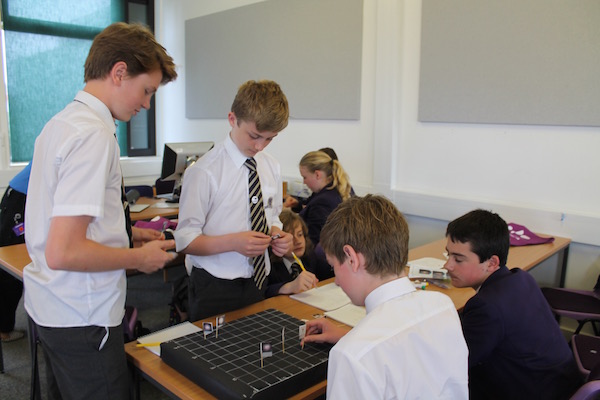This news item was written by Year 12 student Louis Forsyth from Bishop Luffa School, while on work experience at the ICG.
On Thursday 16th July 2015, 40 secondary school pupils came to the University of Portsmouth for a “Think Bigger” workshop led by members of the Institute of Cosmology and Gravitation. The morning of talks and workshops was designed to show Key Stage 3 students the basis for modern cosmology and astronomy, to get them inspired in this field.
First there was a short introduction, led by Dr. Jen Gupta with work experience student Louis Forsyth. This introduction explained how the scales that most people think in on a day-to-day basis are completely dwarfed by those used when studying astronomy and cosmology, thus “thinking bigger”. It consisted of depicting how distances we commonly perceive to be ‘far’ or structures we think of as huge (e.g. the Sun) are made negligible by the cosmos.
For the first workshop, the attendees were then given pictures of galaxies and asked to split them into groups that they thought best showed the diversity or similarities between the galaxies, for example based on their colour or shape. Each school then nominated a representative to explain their classifications to the rest of the attendees.
After this, the students listened to a talk by Dr. Kyle Westfall on the way galaxies are described and classified by professional astronomers. He described the process used by modern astronomers (himself included) to study these incredible structures that we see.
For the second workshop, the students were given some new pictures of galaxies and asked to classify them as spiral, elliptical or unknown. When they had done this, the students were told to plot the galaxies on a grid that modelled the Virgo cluster. This allowed them to get a sense of how the galaxies are arranged inside this cluster. In the final part of the workshop, Dr. Westfall and Nic Bonne explained some of the physics behind why these patterns emerge.
The event ended with Dr. Gupta explaining to the pupils the best ways to get involved in this area of research and which paths they should take to get there.

